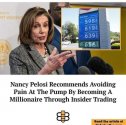How the US failed the baby formula crisis
The shortage remains in place despite the authorities’ efforts to fill the deficit
The shortage of baby formula currently gripping the US started during the Covid-19 pandemic. In 2021, there were
that families across the country were struggling to find key baby products like diapers, wipes and formula. The shortage was mainly
on supply-chain issues – however, some experts pointed out that panic buying was aggravating the situation, too. During the pandemic, it was hardly a surprise that people were stocking up on products they deemed essential.
According to
, a real-time product data provider, for the first seven months of 2021, the out-of-stock percentages
“were relatively stable” and fluctuated by between 2% and 8%. Then the situation started to worsen and, in January 2022, baby formula shortages hit 23%.
Abbott baby formula recall
In the US, there are
companies holding the largest market share in the formula manufacturing industry: Abbott Laboratories, Mead Johnson, Perrigo Company PLC and Nestle Sa. The
normally produces 98% of the formula it consumes. So, a disruption affecting one of the giants became a key factor to make the shortage critical.
In February 2022, Abbott – which is
to control over 40% of the formula market – initiated a voluntary recall of several products manufactured in Sturgis, Michigan. According to the US Food and Drug Administration (FDA), four babies were
to hospital after consuming formula potentially infected with cronobacter and produced at the facility in question. Two of the infants died.
to the FDA, cronobacter bacteria is especially dangerous for newborn babies. It can cause sepsis or meningitis and bowel damage. Abbott
that cronobacter was found in non-product contact areas of the Michigan facility.
“We believe our voluntary was the right thing to do. We will not take risks when it comes to the health of children,” Abbott CEO Robert Ford
in an op-ed for the Washington Post in May.
“The data collected during the investigation, genetic sequencing, retained product samples and available product from the four complaints did not find any connection between our products and the four reported illnesses in children. However, the did discover a bacteria in our plant that we will not tolerate.”
As of April 2022, the baby formula out-of-stock rate hit 31%. For the week ending May 8, the nationwide out-of-stock percentage
at 43%.
“Inflation, supply-chain shortages, and product recalls have brought an unprecedented amount of volatility for baby formula,” Datasembly founder and CEO Ben Reich said.
“We expect to continue to see the baby formula category being dramatically affected by these conditions.”
Unexpected shortage impact
It took months for the US government to realize that the crisis was serious.
“I don’t think anyone anticipated the impact of the shutdown of one facility,” US President Joe Biden
during a meeting with executives of five baby-food companies at the beginning of June.
“Once we learned of the extent of it and how broad it was, we kicked everything into gear.” Biden also added that he hadn’t been aware of the extent of the crisis until April.
In May, the US president
the Defense Production Act to ensure that baby-food manufacturers had priority access to the resources they need. Also, the government launched the so-called “Operation Fly Formula,” making the Department of Defense import the formula from abroad by using commercial aircraft. The FDA
guidance outlining
“increased flexibilities regarding importation of certain infant formula products.”
However, all these measures were blasted as slow. Even FDA chief Robert Califf
, while testifying before a House subcommittee investigating the shortage, that his organization’s response was
“too slow and there were decisions that were suboptimal along the way.”
Regarding the timely importation of materials, it turns out that the supply-chain issues are behind several shortages the US is facing now. Simultaneously with the baby-formula crisis, US customers are lacking tampons. The New York Times
that Andre Schulten, the chief financial officer of Tampax manufacturer Procter & Gamble, said on a recent earnings call that it had been
“costly and highly volatile” to acquire the raw materials such as cotton and plastic.
In critical need
The situation with the baby-formula deficit included a very dangerous factor. One of the recalled formulas was EleCare – Abbott’s special hypoallergenic product used by infants and children with severe food allergies or gastrointestinal disorders, who require amino acid-based formulas. In
, two children were hospitalized as their families were unable to get EleCare. In
, four babies were admitted to hospital as their parents tried to feed them substitutes or make formula at home.
At the end of May, authorities
Abbott to release limited quantities of EleCare for children in urgent medical need. Plus, the Sturgis facility reopened on June 4, and the company promised to prioritize production of EleCare.
Less than two weeks later, the disgraced facility had to be shut down again – this time due to flooding.
“Abbott has stopped production of its EleCare specialty formula that was underway to assess damage caused by the storm and clean and resanitize the plant,” the company said in a
.
“We have informed FDA and will conduct comprehensive testing in conjunction with the independent third party to ensure the plant is safe to resume production. This will likely delay production and distribution of new product for a few weeks.”
See link for rest of article...


